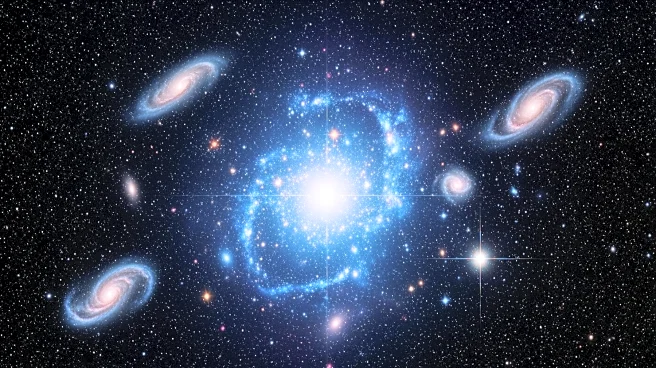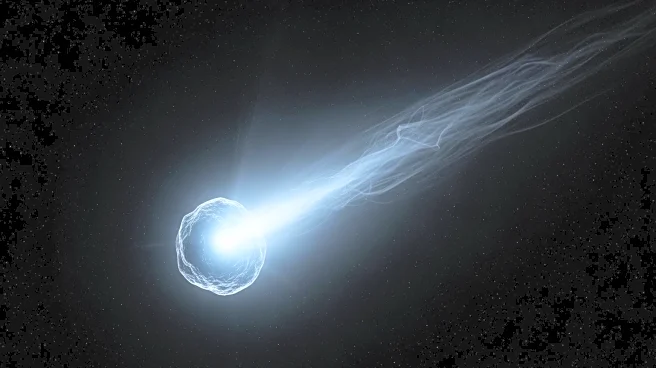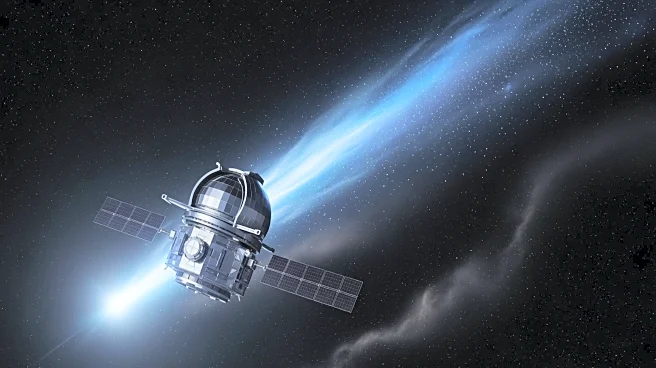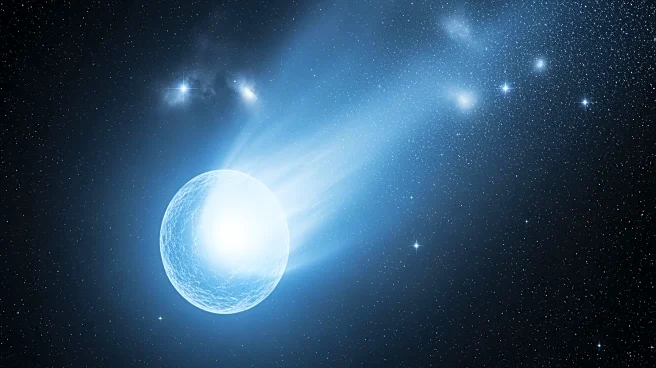What's Happening?
Astronomers using the James Webb Space Telescope have found chemical signatures in distant galaxies that suggest the presence of supermassive stars, potentially up to 10,000 times the mass of the sun.
These stars, known as Population III stars, are hypothesized to exist in the early universe and could explain the origins of extremely large black holes. The discovery challenges existing models that limit star sizes to 120 solar masses, offering new insights into cosmic evolution.
Why It's Important?
The potential existence of supermassive stars in the early universe could reshape our understanding of star formation and the development of black holes. These findings may provide answers to longstanding questions about the rapid growth of supermassive black holes, offering a new perspective on cosmic history. The discovery highlights the capabilities of the James Webb Space Telescope in uncovering previously unseen aspects of the universe.











